In today’s technology-driven world, having reliable IT support is crucial for the smooth functioning of any organization. Whether you’re a small business, a large corporation, or an educational institution, making the right choice in IT support can greatly impact your operations. With so many options out there, it can be challenging to identify and select the best IT support solution for your specific needs. In this blog, I will explore the three most common IT support options: Internal IT support, External IT support (Break-Fix Model), and Managed Service Providers (MSPs) and provide the pros and cons of each. This comprehensive guide will better equip you to select the IT support that aligns best with your organization, ensuring seamless and efficient IT operations.
Internal IT Support
Internal IT support refers to a dedicated team or individual who is directly employed by your organization. This team or individual, often referred to as the IT department or IT support staff, works exclusively for the organization and is responsible for managing, maintaining, and troubleshooting your IT infrastructure and systems.
Pros:
- Onsite Presence: One of the primary advantages of having internal IT support is having someone physically present within your organization. This immediate accessibility can be beneficial when dealing with urgent technical issues.
- Familiarity with Your Organization: Internal IT staff are intimately acquainted with your organization’s unique IT infrastructure, systems, and operations. This can lead to quicker issue resolution.
- Customized Solutions: Internal IT teams can develop and implement customized IT solutions based on the organization’s unique requirements. They can design and deploy systems that align with your goals and workflow.
Cons:
- Costly Overhead: Maintaining an internal IT department can be expensive. You’ll have to cover salaries, benefits, training, and equipment and systems costs, even when IT issues are infrequent.
- Limited Expertise: Relying solely on an internal IT team means you’re restricted to the skills and knowledge of those individuals. They may not have the diverse skill set required to handle all possible IT challenges.
- Security Management: It is difficult for an internal IT support team to be responsible for safeguarding the organization’s data and network security. They may have difficulty implementing security measures, monitoring for potential threats, and responding to security incidents promptly.
External IT Support (Break-Fix Model)
The Break-Fix Model of IT Support is a traditional approach to providing IT services where organizations only seek external assistance from IT professionals when an issue or problem arises. This model is characterized by a reactive rather than proactive approach to IT support – meaning IT professionals are called in to “fix” something that has “broken.”
Pros:
- Cost-Effective: With external IT support on a break-fix model, you only pay for the services you need. This can be a more budget-friendly option for organizations with only occasional IT issues.
- Access to Specialists: External IT support providers often have a pool of experts specializing in different areas of IT. You can access the right expertise when specific problems arise.
Cons:
- Availability Challenges: External IT support providers serve multiple clients, and there may be delays in your response time during peak hours or when dealing with other customers’ issues.
- Lack of Continuous Monitoring: The break-fix model doesn’t provide continuous monitoring and maintenance of your IT systems. This can result in recurring issues and potential downtime.
- Varied Expertise: The IT professionals working under the Break-Fix Model can have a range of expertise so you may need to engage different providers for different issues. This can lead to variations in service quality and response times. Several resources may likely be needed to cover all the areas of your organization’s IT infrastructure.
- Long-Term Strategy: The primary goal of the Break-Fix Model is to resolve immediate technical issues or problems. There is generally no long-term IT strategy or proactive planning involved.
Managed Service Providers (MSPs)
Managed Service Provider (MSP) IT Support, my personal favorite, is a comprehensive and proactive approach to managing your organization’s IT needs. In this model, an external IT service provider takes responsibility for some – or all – aspects of the IT infrastructure and operations.
Pros:
- Proactive Management: MSPs proactively monitor your IT systems and infrastructure 24/7. They identify and address potential issues before they become critical problems, minimizing downtime and disruptions.
- Ongoing Maintenance: MSPs can handle your software updates, security patches, and hardware maintenance. These routine maintenance tasks ensure that your organization’s IT environment remains up-to-date and secure.
- Scalability: MSPs can scale their services to match your needs, whether it’s a small business or a large enterprise. This scalability allows organizations to access the right level of IT support.
- Diverse Expertise: MSPs often employ a team of IT professionals with diverse skill sets. They provide you with access to a wide range of expertise and specialized knowledge when needed.
- Comprehensive Support: MSPs offer end-to-end IT support, covering everything from help desk services for user support to full-/part-time on-site technical support to managing complex server and network infrastructures.
- Fixed Monthly Costs: Organizations typically pay a fixed monthly fee for MSP services, making budgeting predictable and eliminating unexpected IT expenses.
Additional Pros that Differentiate an MSP
Some MSPs (Managed Service Providers) provide next-level support with services that go beyond the technical work itself and fulfill a consulting role. This model creates more of a partnership with your MSP who also helps strategize and proactively protect your organization.
- Strategic IT Planning: An MSP can help you develop long-term IT strategies aligned with your business goals. Assisting with technology roadmaps, they ensure that your IT investments support growth and innovation.
- Vendor Management: Managing relationships with technology vendors can be time consuming. An MSP can handle this for you and see to it that your organization gets the best value from software and hardware purchases.
- Backup and Disaster Recovery: MSPs can implement robust backup and disaster recovery solutions. These protect against data loss and ensure business continuity in case of unforeseen events.
- Security as a Service: There are a range of security services that an MSP can provide. They can include Firewalls (and subscriptions), Email protection, Endpoint Security, Web security, and even security monitoring, detection, and response to security incidents.
Cons:
- Ongoing Commitment: Partnering with an MSP involves a recurring subscription fee. This can be more expensive than the break-fix model if you have minimal IT needs.
- Dependency on the Provider: Relying on an MSP means putting a significant portion of your IT operations in their hands. Choosing the wrong MSP can lead to issues if they don’t meet your expectations.
Conclusion
Selecting the best IT support for your organization requires a careful evaluation of your unique needs, budget, and long-term goals. Each option—Internal IT support, External IT support (Break-Fix Model), and Managed Service Providers—comes with its own set of advantages and drawbacks.
Ultimately, the right choice will depend on your organization’s size, IT requirements, and budget considerations. While internal IT support offers familiarity and immediate assistance, it can be costly. External support on a break-fix model may be more cost-effective but increases your security risk and potential downtime. A Managed Service Provider offers a balance of the most comprehensive support and value.
By weighing the pros and cons of each option, you can make an informed decision that ensures that your business or school’s IT infrastructure remains reliable and efficient.
If you think an MSP might be the best match for your organization and/or would like to learn more, Book a Meeting with me for a Complimentary Consultation. Spera Partners provides innovative solutions and customized IT support that align with your needs.
Brian Hess
President, Spera Partners
Learn more about our Full Managed Services at https://sperapartners.com/full-managed-service-provider/














